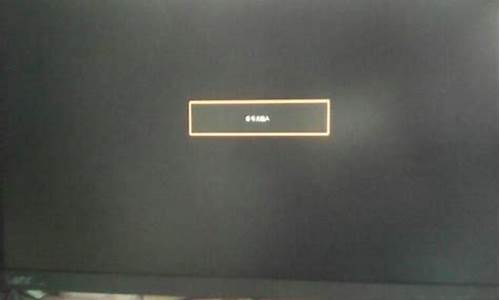工作站电脑跟普通电脑有什么区别_工作站电脑系统有哪些品牌

Microsoft Windows NT(New Technology)是Microsoft在1993年推出的面向工作站、网络服务器和大型计算机的网络操作系统,也可做PC操作系统。
截止2014年,微软已推出19个Windows NT操作系统。
NT 版本 市场名称
NT 3.1 Windows NT 3.1 Workstation(仅被命名为“Windows NT”), Advanced Server 1993年7月27日 528
NT 3.5 Windows NT 3.5 Workstation, Advanced Server 1994年9月5日 807
NT 3.51 Windows NT 3.51 Workstation, Server 1995年5月30日 1057
NT 4.0 Windows NT 4.0 Workstation, Server, Server Enterprise Edition, Terminal Server, Embedded 1996年7月29日 1381
NT 5.0 Windows 2000 Professional, Server, Advanced Server, DataCenter Server 2000年2月17日 2195
NT 5.1 Windows XP Home, Professional, Media Center, Tablet PC, Starter, Embedded, N 2001年10月15日 2600
NT5.2 Windows XP 64-bit Edition Version 2003 (此专为AMD64而开发), Professional x64 Edition ●IA64: 2003年3月28日●x64: 2005年4月25日 3790
Windows Server 2003 Standard, Enterprise, DataCenter, Web, Small Business Server 2003年4月24日
Windows Server 2003 R2 Standard, Enterprise, DataCenter, Web, Small Business Server 2005年12月6日
NT6.0 Windows Vista Starter, Home Basic, Home Premium, Professional, Enterprise, Ultimate 2007年1月30日
Windows Server 2008 Foundation, Standard, Enterprise, Datacenter, Web Server, HPC Server, Itanium-Based Systems 2008年8月27日
NT6.1 Windows 7 Starter, Home Basic, Home Premium, Professional, Enterprise, Ultimate 2009年10月22日
Windows Server 2008 R2 Foundation, Standard, Enterprise, Datacenter, Web Server, HPC Server, Itanium-Based Systems 2009年10月22日
NT6.2 Windows 8 Windows 8, Windows 8 Pro, Windows 8 Enterprise, Windows RT 2012年10月26日 9200
Windows Phone 8 不适用 2012年10月30日 9900
Windows Server 2012 Foundation, Essentials, Standard, Datacenter 2012年9月4日
NT6.3 Windows 8.1 Windows 8.1, Windows 8.1 Pro, Windows 8.1 Enterprise, Windows RT 8.1 2013年10月18日
Windows Server 2012 R2 Essentials, Standard, Datacenter 2013年10月18日 9600
NT6.4 Windows 10 Technical Preview (v.6.4.9841) 2014年10月1日
NT 10.0 Windows 10
1、Windows系列操作系
Microsoft Windows 系列操作系统是在微软给IBM机器设计MS-DOS的基础上设计的图形操作系现在的Windows系统,如Windows 2000、Windows XP皆是建立于现代的Windows NT内核。NT内核是由OS/2和OpenVMS等系统上借用来的。Windows 可以在32位和64位的Intel和AMD的处理器上运行,但是早期的版本也可以在DEC Alpha、MIPS与PowerPC架构上运行。 虽然由于人们对于开放源代码作业系统兴趣的提升,Windows的市场占有率有所下降,但是到2004年为止,Windows操作系统在世界范围内占据了桌面操作系统90%的市场。Windows系统也被用在低阶和中阶服务器上,并且支持网页服务的数据库服务等一些功能。最近微软花费了很大研究与开发的经费用于使Windows拥有能运行企业的大型程序的能力。
2、Unix类操作系统
如SOLARIS,BSD系列(FREEBSD,openbsd,netbsd,pcbsd);Unix系统可在非常多的处理器架构下执行,在服务器系统上有很高的使用率,例如大专院校或工程应用的工作站。自由软件Unix变种,例如Linux与BSD近来越来越受欢迎,它们也在个人桌面电脑市场上大有斩获,例如Ubuntu系统,但大部分都是电脑高手在使用。某些Unix变种,例如HP的HP-UX以及IBM的AIX仅设计用于自家的硬件产品上,而SUN的Solaris可安装于自家的硬件或x86电脑上。苹果电脑的Mac OS X是一个从NeXTSTEP、Mach以及FreeBSD共同派生出来的微内核BSD系统,此OS取代了苹果电脑早期非Unix家族的Mac OS。经历数年的披荆斩棘,自由开源的Unix系统逐渐蚕食鲸吞以往专利软件的专业领域,例如以往电脑动画运算巨擘——SGI的IRIX系统已被Linux家族及Plan 9丛集所取代。
3、Linux类操作系统
如UBUNTU,suse linux,fedora,等 ,Linux的是一套免费的32位多人多工的操作系统,运行方式同UNIX系统很像,但Linux系统的稳定性、多工能力与网络功能已是许多商业操作系统无法比拟的,Linux还有一项最大的特色在于源代码完全公开,在符合GNU GPL(General Public License)的原则下,任何人皆可自由取得、散布、甚至修改源代码。
4、Mac操作系统
由苹果公司生产(Darwin),一般安装于MAC电脑。苹果Mac OS系列操作系统是苹果公司 (原称苹果电脑)给苹果个人电脑系列设计的OS。
声明:本站所有文章资源内容,如无特殊说明或标注,均为采集网络资源。如若本站内容侵犯了原著者的合法权益,可联系本站删除。












